“For centuries, it was a curse that saved the river. It was a series of curses, actually – a centuries-long string of unrelenting bad news in this rugged, hidden corner of northern India’s industrial belt. There was an actual curse at first, a longheld belief that the Chambal River was unholy. There was the land itself, and the more earthly curse of its poor-quality soil. And above all there were the bandits, hiding in the badlands and causing countless eruptions of violence and fear. But instead of destroying the river, these things protected it by keeping the outside world away. The isolation created a sanctuary. It is a place of crocodiles and jackals, of river dolphins and the occasional wolf. Hundreds of species of birds – storks, geese, babblers, larks, falcons and so many more – nest along the river. Endangered birds lay small speckled eggs in tiny pits they dig in the sandbars. Gharials, rare crocodile-like creatures that look like they swaggered out of the Mesozoic Era, are commonplace here and nowhere else. Today, tucked in a hidden corner of what is now a deeply polluted region, where the stench of industrial fumes fills the air in dozens of towns and tons of raw sewage is dumped every day into many rivers, the Chambal has remained essentially wild. But if bad news saved the river, good news now threatens to destroy it. The modern world, it turns out, may be the most dangerous curse of all”. – Associated Press
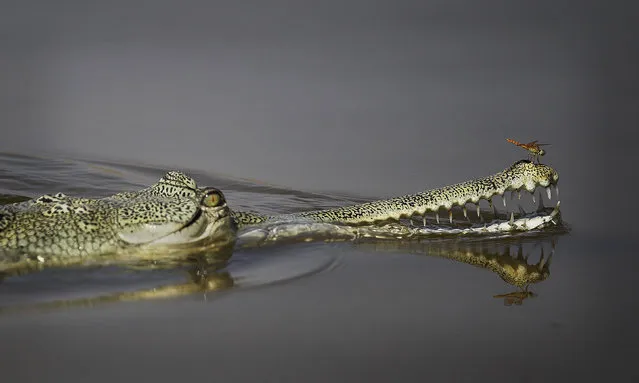
In this photo taken Wednesday, April 30, 2014, a dragonfly sits on the nose of a Gharial, rare crocodile-like creatures, in the River Chambal near Bhopepura village in the northern Indian state of Uttar Pradesh. The narrow 250-mile stretch of the Chambal is a place of crocodiles and jackals, of river dolphins and the occasional wolf. Hundreds of species of birds, storks, geese, babblers, larks, falcons and so many more, nest along the river. Endangered birds lay small speckled eggs in tiny pits they dig in the sandbars. Gharials, rare crocodile-like creatures that look like they swaggered out of the Mesozoic Era, are commonplace here and nowhere else. (Photo by Altaf Qadri/AP Photo)
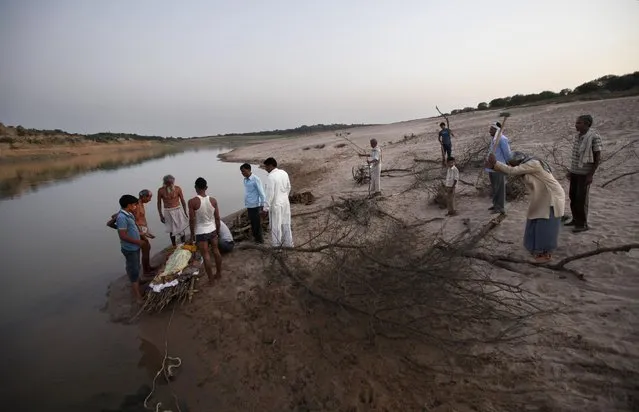
In this photo taken Monday, April 28, 2014, villagers prepare for the cremation of an elderly woman on the banks of the Chambal River near Bhopepura village, in the northern Indian state of Uttar Pradesh. The fears that shaped this region go back more than a thousand years, to when sages said the Chambal (the term refers both to the river and the rugged land around it) had been cursed and villagers whispered that it was unholy. In a culture where rivers have long been worshipped, farmers avoided planting along the river’s banks. (Photo by Altaf Qadri/AP Photo)
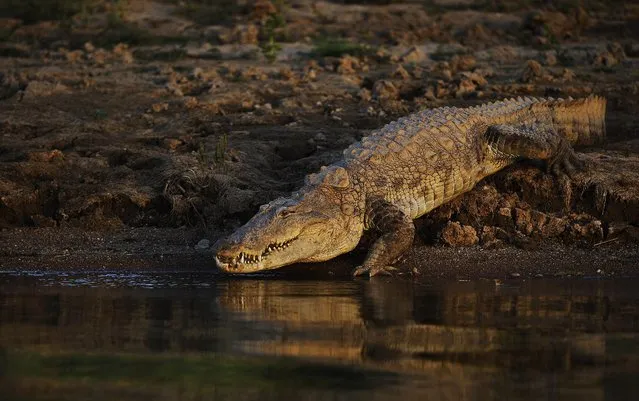
In this photo taken Monday, April 28, 2014, a crocodile rests on the banks of the River Chambal near Bhopepura village in the northern Indian state of Uttar Pradesh. (Photo by Altaf Qadri/AP Photo)
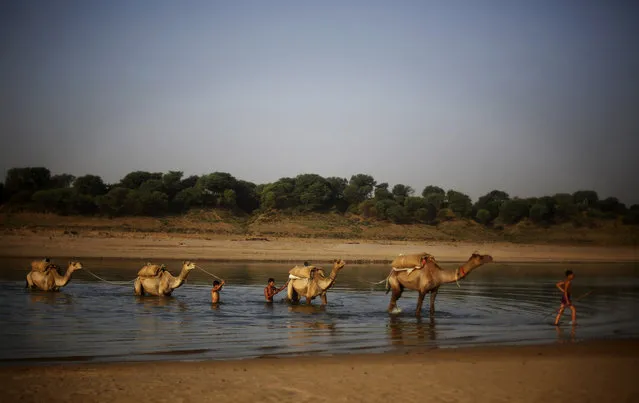
In this photo taken Tuesday, April 29, 2014, Indians lead their camels, carrying provision, across the Chambal River near Bhopepura village, in the northern Indian state of Uttar Pradesh. (Photo by Altaf Qadri/AP Photo)
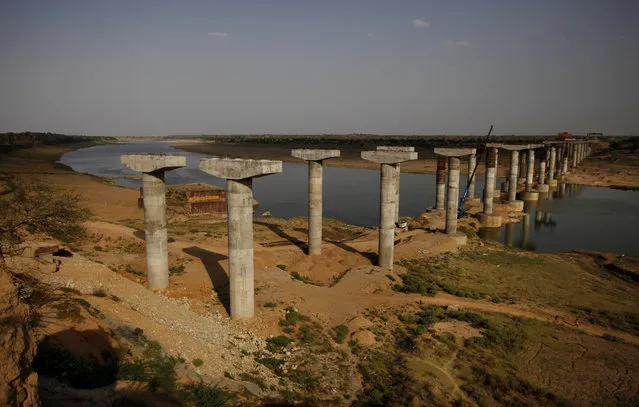
In this photo taken Wednesday, April 30, 2014, a bridge is seen under construction on the Chambal River near Sagarpada in the western Indian state of Rajasthan. (Photo by Altaf Qadri/AP Photo)
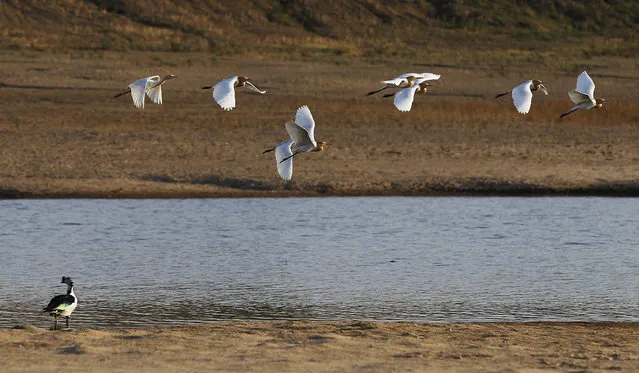
In this photo taken Monday, April 28, 2014, Cattle Egrets fly past a Comb Duck on the banks of the Chambal River near village Bhopepura in the northern Indian state of Uttar Pradesh. (Photo by Altaf Qadri/AP Photo)
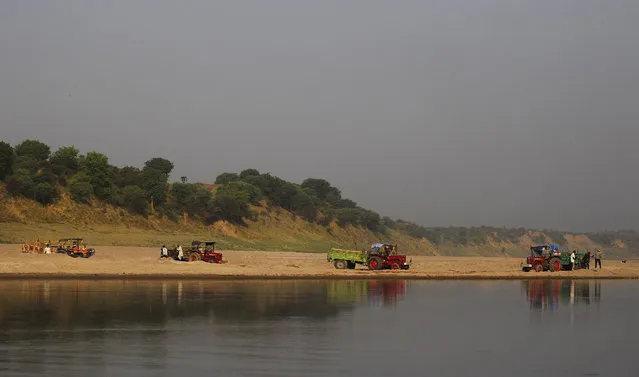
In this photo taken Tuesday, April 29, 2014, laborers load sand onto tractor trolleys on the banks of the Chambal River near Bhopepura village in the northern Indian state of Uttar Pradesh. The most immediate worry to this narrow 250-mile stretch of the Chambal sanctuary is illegal sand mining, which can strip away thousands of tons of riverbank on a single day, causing immense amounts of silt to spill into the river, upsetting its delicate ecology. Dozens of tractors regularly snake down a dirt road to the river, pulling trailers filled with wiry, shovel-wielding men who can earn $15 for a long, exhausting day of work. (Photo by Altaf Qadri/AP Photo)
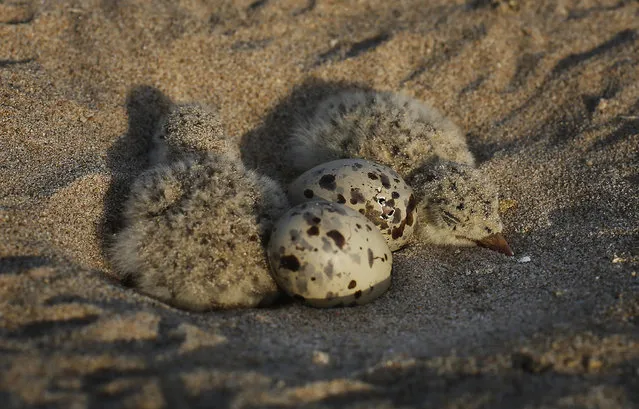
In this photo taken Wednesday, April 30, 2014, chicks and speckled eggs of Indian Skimmer rest in a pit nest on the banks of the Chambal River near village Bhopepura in the northern Indian state of Uttar Pradesh. Hundreds of species of birds, storks, geese, babblers, larks, falcons and so many more, nest along the river. Endangered birds lay small speckled eggs in tiny pits they dig in the sandbars. Gharials, rare crocodile-like creatures that look like they swaggered out of the Mesozoic Era, are commonplace here and nowhere else. (Photo by Altaf Qadri/AP Photo)
[img alt=" In this photo taken Tuesday, April 29, 2014, bells hang from an old temple built near the confluence of the rivers Yamuna, front, and Chambal, background, in Bhareh village in the northern Indian state of Uttar Pradesh. The fears that shaped this region go back more than a thousand years, to when sages said the Chambal, the term refers both to the river and the rugged land around it, had been cursed and villagers whispered that it was unholy.
In this photo taken Tuesday, April 29, 2014, bells hang from an old temple built near the confluence of the rivers Yamuna, front, and Chambal, background, in Bhareh village in the northern Indian state of Uttar Pradesh. The fears that shaped this region go back more than a thousand years, to when sages said the Chambal, the term refers both to the river and the rugged land around it, had been cursed and villagers whispered that it was unholy. In a culture where rivers have long been worshipped, farmers avoided planting along the river's banks. (Photo by Altaf Qadri/AP Photo)
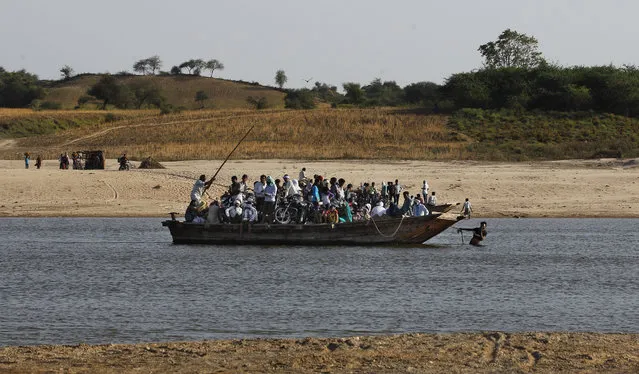
In this photo taken Monday, April 28, 2014, Indian villagers cross the River Chambal on a ferry near Bhopepura village in the northern Indian state of Uttar Pradesh. (Photo by Altaf Qadri/AP Photo)
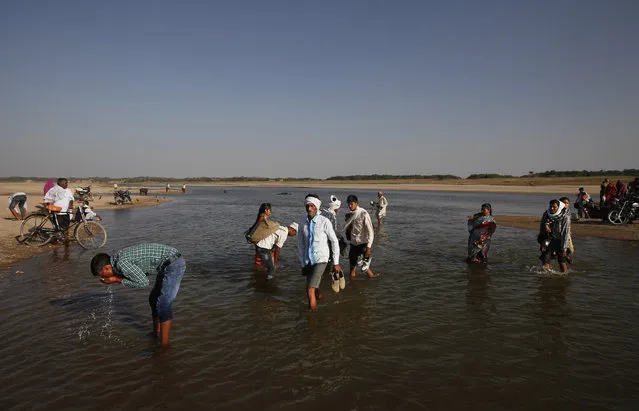
In this photo taken Monday, April 28, 2014, an Indian drinks straight from the river as villagers wade through the shallow waters after crossing the River Chambal in a ferry near Bhopepura village in the northern Indian state of Uttar Pradesh. (Photo by Altaf Qadri/AP Photo)
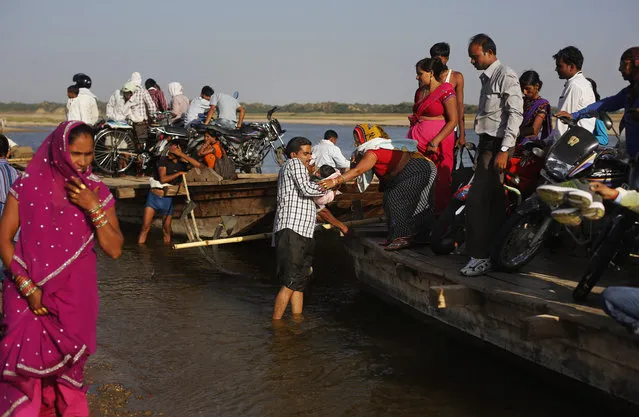
In this photo taken Monday, April 28, 2014, Indian villagers alight from a ferry after crossing the River Chambal near Bhopepura village in the northern Indian state of Uttar Pradesh. (Photo by Altaf Qadri/AP Photo)
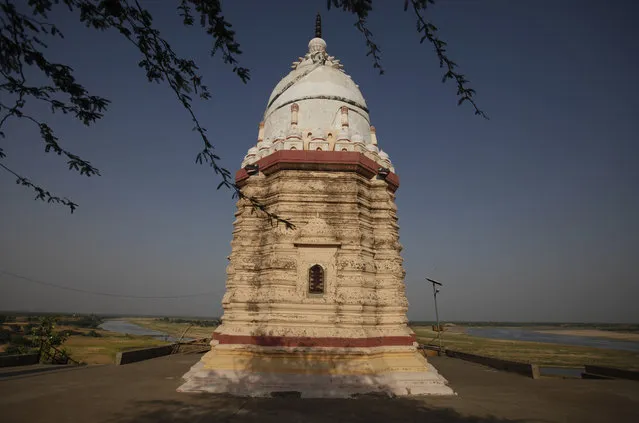
In this photo taken Tuesday, April 29, 2014, an old temple stands near the confluence of the Rivers Yamuna, seen on left, and Chambal, on right, in Bhareh village in the northern Indian state of Uttar Pradesh. (Photo by Altaf Qadri/AP Photo)
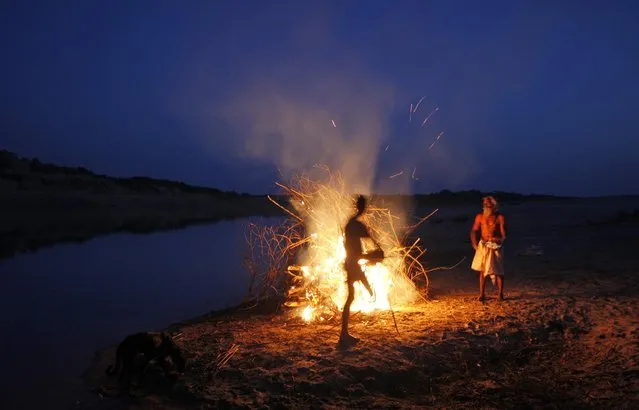
In this photo taken Monday, April 28, 2014, flames rise from the cremation pyre of an elderly woman on the banks of the Chambal River near Bhopepura village, in the northern Indian state of Uttar Pradesh. (Photo by Altaf Qadri/AP Photo)
23 Feb 2015 12:55:00,
post received
0 comments
